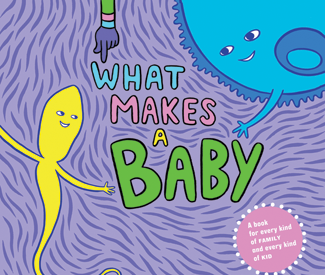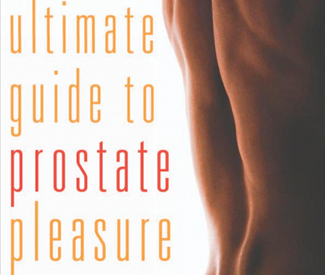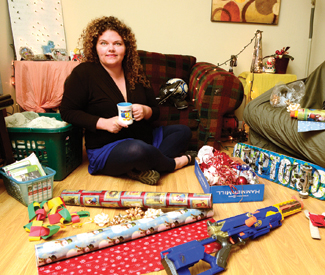culture@sfbg.com
LIT A new children’s book with a social justice, all-inclusive approach to reproduction? To anyone who might question the need for such a thing, look no further than Toronto-based sexual health educator and writer Cory Silverberg‘s enormously successful crowdfunding campaign to get it published: $65,000 in one month. Not too bad to kickstart a picture book, eh?
Silverberg, along with illustrator Fiona Smyth, noticed that the existing resources for parents to explain to preschool-aged children where they came from are by default heterosexual and gender binary-based, thus excluding many families and children. These books also don’t provide much guidance on topics like adoption or alternative fertilization methods. Silverberg’s fundraising campaign gave LGBT parents an opportunity to prove demand for a factual, age-appropriate, children’s book inclusive to all families regardless of how many people were involved, what the orientation, gender identity, or other make up of the family is, or how it came to be that way.
Parents in the Bay Area offered a lot of the support. Dr. Sonja Mackenzie, faculty at the Health Equity Institute and Center for Research and Education on Gender and Sexuality (CREGS) at San Francisco State University is a queer parent of two children, aged three and seven. Dr. Mackenzie started looking for resources about birth and reproduction when her daughter was two and she was pregnant with her second child. She and her partner sought out media providing age-appropriate but real information about reproduction that reflected their two-mom family structure. For years they found nothing.
Which is why when she saw the What Makes A Baby campaign, she pre-ordered copies for their daughter’s first grade class and their son’s preschool class. Dr. Mackenzie said her favorite parts of the book are the questions that ask children to reflect on “who helped bring together the sperm and the egg that made you?” — because of the possibilities for varied family structures that question allows for. That, she says, “is beyond what we have ever seen represented in children’s books.” She also notes the tear-jerker at the close of the book that asks, “Who was waiting for you to be born?” alongside a depiction of many and varied people surrounding a baby.
Bay Area backer Vicki Hudson, parent to two kids aged four and one, also started looking for books when her wife was pregnant with their second child. What Makes A Baby “enables many different types of families to feel represented. Our story was there.” She also appreciated the physiological accuracy of the preschool material. Hudson believes that using accurate reproductive terms empowers children.
Another family structure included in the story’s framework is that of a single parent household. Hilary Brooks of Berkeley is a single mother by choice, whose five-year-old daughter has a known sperm donor. Brooks was excited about the book because she was “ecstatic to see this entry for young children… it’s more accurate, includes everyone, and will not alienate many of the children it needs to reach.” Once she received her copy she was not disappointed, “I love that love is included in this book, and that it is reframed as love for every child from their family — instead of originating in hetero lovemaking, like it was in the sex-ed books I read growing up.” Which is a main premise of Silverberg’s work, to provide a sexual education resource that is straight friendly, but is also for the parents who don’t have anything else right now.
Are mainstream publishers beginning to recognize this demand? There’s still an overwhelming amount of stigma associated with any book related to alternative sexuality. Despite the actual facts of life, books like What Makes A Baby are still too risky for mainstream publishers, it seems. Or maybe it just takes a little pitch in a language they understand. After the outpouring of immediate and public financial support for Silverberg’s book, he was approached by multiple publishing houses, and has signed a three-book deal with Seven Stories Press, beginning with What Makes A Baby. Silverberg’s next volume might well be What Makes a Book Contract.
CORY SILVERBERG: WHAT MAKES A BABY AUTHOR RECEPTION AND “CROWDFUNDING FOR SEX” WORKSHOP
Fri/12, 7:30 reception, free. 8:30 workshop, $10-$50 sliding scale
Center for Sex and Culture
1349 Mission, SF.
(415) 902-2071



